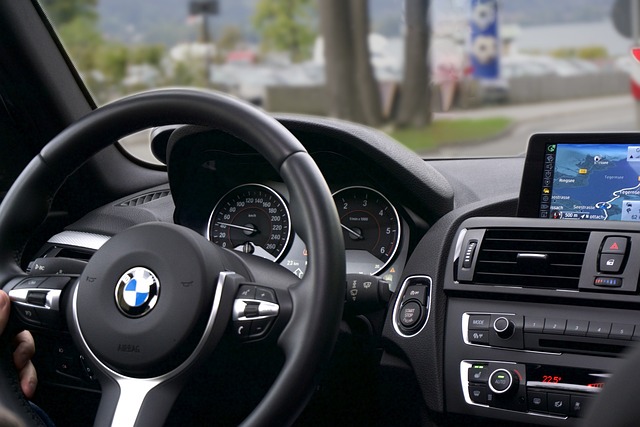Looking to register your car in California? This comprehensive guide walks you through the process step-by-step. First, understand California’s unique car registration requirements. Next, gather essential documents for VIN (Vehicle Identification Number) verification—a crucial part of the process. After performing the VIN check, submit applications and fees to the DMV. Finally, receive your official California registration papers. Follow these simple steps for a smooth and efficient car registration experience.
- Understand California Car Registration Requirements
- Gather Necessary Documents for VIN Verification
- Perform Vehicle Identification Number (VIN) Check
- Submit Applications and Pay Fees to DMV
- Receive Your California Registration Papers
Understand California Car Registration Requirements

Before registering your car in California, it’s crucial to understand the state’s specific requirements. One key step is ensuring your vehicle has passed a valid vin verification process, which involves a comprehensive vin inspection to confirm its authenticity and history. The California Department of Motor Vehicles (DMV) mandates this check to prevent the registration of stolen or counterfeit vehicles.
Additionally, you’ll need to meet certain criteria related to ownership documents, vehicle condition, and any outstanding warrants or liens. It’s recommended to gather all necessary paperwork beforehand, including proof of purchase, insurance, and valid identification. For added convenience, consider opting for a mobile vin inspection service, which allows you to complete the verification process at your preferred location, saving time and effort.
Gather Necessary Documents for VIN Verification

Before registering your car in California, you’ll need to gather essential documents for the Vehicle Identification Number (VIN) verification process. This step is crucial as it ensures that your vehicle meets all safety and emission standards set by the state. For a smooth experience, prepare these key documents: your vehicle’s registration certificate from the previous state, proof of ownership (such as a title document), and your driver’s license. Additionally, you might need to present insurance proof, especially if you’re financing your car.
For a convenient and efficient VIN verification process, consider utilizing mobile vin inspection services. These options allow for on-demand appointments, where a trained professional will visit you at your location, conduct the vin inspection, and provide instant feedback. This is particularly useful if you’ve recently purchased a used vehicle or are facing issues with traditional registration methods.
Perform Vehicle Identification Number (VIN) Check

Before you begin the registration process, it’s crucial to perform a Vehicle Identification Number (VIN) check. This step is essential for ensuring that the car you’re looking to register is genuine and hasn’t been reported as stolen or had its identity tampered with. In California, VIN verification is a key part of the vehicle registration procedure.
You can conduct a VIN inspection in several ways, including through a mobile vin verification service, which allows you to check a vehicle’s history remotely. These services provide detailed reports that include crucial information about the car, such as its previous owners, maintenance records, and any reported accidents. By undergoing this process, you’ll have peace of mind knowing that your new or used car is safe and legal to register in the Golden State.
Submit Applications and Pay Fees to DMV

To register your car in California, the first step is to ensure all necessary documents are prepared and accurate. This includes proof of ownership, vehicle identification number (VIN) verification, and any required forms from previous owners or manufacturers. Once everything is in order, you’ll need to submit these applications along with the appropriate fees to the Department of Motor Vehicles (DMV).
The process typically involves filling out Form SM 700, which is the Application for Title and Registration, and submitting it along with your completed VIN verification form. You can have this done through a mobile vin inspection service or by visiting a DMV field office. Be sure to bring all required fees, as they vary based on vehicle type and other factors. This step is crucial in ensuring that your car’s registration is official and valid for California roads.
Receive Your California Registration Papers

After completing your vehicle purchase, the next step is to receive your California registration papers. This process typically involves a few key steps, including verifying the vehicle’s identification number (VIN). A mobile VIN verifier can facilitate this by providing a convenient and accurate VIN inspection right from your location. By ensuring the VIN is valid and matches the vehicle you’ve purchased, you’re one step closer to officially registering your car in California.
The registration papers will include important information specific to your vehicle and state requirements. Make sure all details are correct before proceeding with the registration process. A mobile VIN verification service can be particularly helpful here, as it allows for a swift and reliable check of your vehicle’s history and specifications. This ensures that when you submit your registration application, everything is in order, streamlining the overall registration experience.
Registering a car in California involves understanding key requirements, gathering essential documents for VIN verification, conducting a vehicle identification number (VIN) check, submitting applications and fees to the DMV, and ultimately receiving your California registration papers. This process ensures that your vehicle complies with state standards, allowing you to legally operate it on California roads. Remember to keep your documentation up-to-date for seamless future registrations and to avoid any legal complications.
